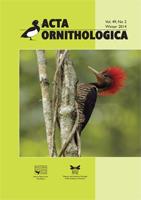Nest success is often used to evaluate the impact of environmental stressors on species, but nestling growth may also be indicative of subtle consequences on individual fitness. We monitored Black-backed Woodpecker Picoides arcticus nestling growth in unburned boreal forests under the influence of commercial logging. The objectives of our exploratory study were to estimate growth rate constants of weight and three morphometric measures (culmen length, tarsal length and wing length) in nestling Black-backed Woodpeckers and to determine how the amount of old coniferous habitat in home ranges may affect these rates. The amount of old coniferous habitat positively influenced weight gain in Black-backed Woodpecker nestlings but did not influence the three morphometric measures of growth rate. Our results suggest that Black-backed Woodpecker fitness may be affected by the reduction of old coniferous habitat in managed forest landscapes. We encourage further studies on the relationship between habitat quality and nestling growth as a potentially useful indicator of how habitat loss might influence individual fitness in these species.
How to translate text using browser tools
1 December 2014
Influence of Old Coniferous Habitat on Nestling Growth of Black-Backed Woodpeckers Picoides arcticus
Junior A. Tremblay,
Jacques Ibarzabal,
Jean-Pierre L. Savard,
Scott Wilson
ACCESS THE FULL ARTICLE
<
Previous Article
|

Acta Ornithologica
Vol. 49 • No. 2
December 2014
Vol. 49 • No. 2
December 2014
cavity-nesting bird
fitness
forest management
nestling growth rate
unburned boreal forest
woodpecker




